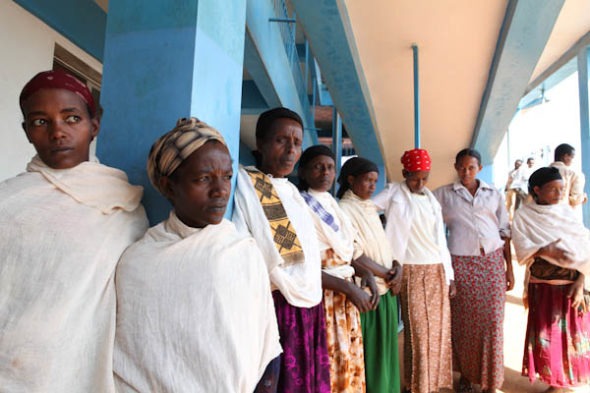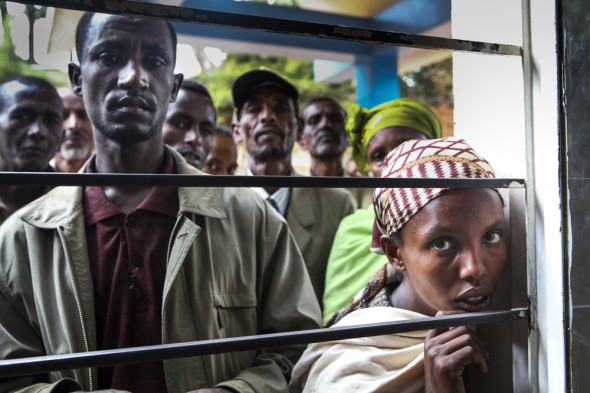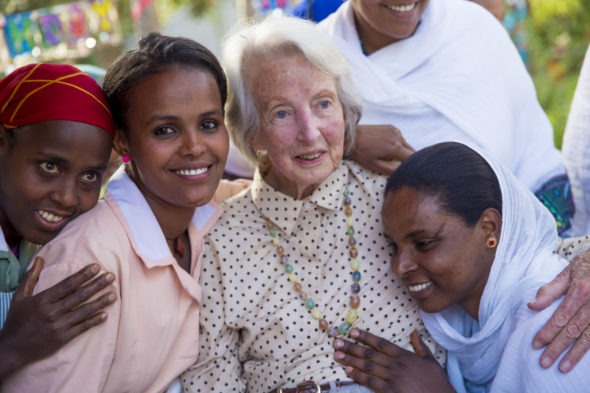Here are samples of two calendars that include portraits I have taken during assignments in Ethiopia.
Category Archives: Ethiopia
The Cadence of Motherhood
But she is only 18 years old, and she is on a mission trip to Ethiopia to help with maternal care surgeries.
As I watch my daughter work alongside deft handed surgeons, my heart pounds a bit harder. Here she is, whole and healthy and grounded, and had we lived in this same Ethiopian town at the time when she was born, most likely we both would have perished. She means the world to me.
I suffered obstructed labor with my first child, and luckily lived in a nation where I had access to emergency obstetrical operations. Two other children came after the first, born under the same conditions, and all three are now enjoying robust lives. And now I have a family to cherish. They mean the world to me.
My connection to women in Ethiopia runs deep. I am devoted to bringing their stories afar with the hope that more people will rally around global maternal care concerns. Each time I look into their eyes, I want to express my sorrow for the inequity of health care around the world. Why was I so fortunate to have had access to emergency obstetrics and these women, the women who teach me so very much, do not? In this day and age, it is unforgivable.
Yet, faced with so many problems and maneuvering a day’s hard work of fetching loads of wood and carrying heavy jerry cans of water while traversing rugged terrain just to get food on the table for their loved ones, these mothers show no remorse and reflect only astonishing resilience. In their eyes, I don’t see sorrow or resentment or desperation; instead, I see a quiet fortitude, boundless happiness, and flickers of hope.
One woman takes my hand and helps me learn how to milk a camel and cook over a fire. Another tells me that my attire will never attract anyone. And yet another mother shows me how to nurture a child through a tantrum. They all, each and every one of them, show me the virtue of grace and the benefits of choosing happiness over despair, even while experiencing dire circumstances.
The demand for good maternal care in Ethiopia is high. Men will carry a woman for days to a health post only to find no staff in sight due to a shortage of doctors and health care officers. Women will stand in line at rural health posts for weeks, waiting for assistance. I applaud organizations such as The Liya Kebede Foundation, The Hamlin Fistula Hospital and The Barbara May Foundation and many others as they work tirelessly to bring effective health care services to these women.
Yet it is the young girls who are embedded in my heart the most. They learn early on to withstand pain and suffering, and to only focus on the positive threads in each day. It is these girls who need reassurance the most – that the world is here for them, and substandard and inequitable health care practices are unacceptable.
They deserve to know that they mean the world to us.
Work Style Magazine Features Market Worker Images
“Abebe” Goes to Vermont
We are especially excited for this, as this image is being considered as a cover for the upcoming book that will be released in September 2014.
All images from The Mercato Workers series were taken in the market in Bahir Dar, Ethiopia.
“Where we began” series wins silver award in the 2014 Prix de la Photographie Competition
I will be returning to the Afar region of Ethiopia this December to further develop the series. It is my hope that these images will bring awareness to the critical needs of these nomadic tribes.
Please see the Barbara May Foundation regarding ways you can join this rally. For large USA based donations, contact me for the 501C3 organization that directly funds this organization and its highly effective projects.
For more information, please refer to the Afar Pastoralist Development Association.
International Photography Awards One World
I am especially happy when images from Ethiopia get this kind of notice as the people there are so incredibly beautiful, inside and out.
The Guardian: Hamlin Article
The Guardian published an article about Dr. Hamlin and her life long quest to see the eradication of this condition.
The Fastest Boy in the World!
You can order the book here.
Here is the image, and the graphic illustration:
A New Website For Hamlin Fistula Hospitals
I worked with David Maier, owner of Third Door, Inc., to produce a more image-centric website. I poured through the last three years’ worth of images to select photos that represented their text. David had to stay within the established color and style guide, and use their current fonts and logos. Here is a “before” and “after” look at what we did.
The basket weave and other touches of texture were made from photographs I took of textiles and baskets made in Ethiopia. Some of these items were made by the Hamlin patients!
See the live version here.
Old Website:
New Website:
People Of Afar
Living a nomadic lifestyle, they are exceptionally beautiful, hyper aware of surroundings, and also attentive to adornment. There is a grace and fortitude they exude that is haunting.
They live in the land where mankind began.




























